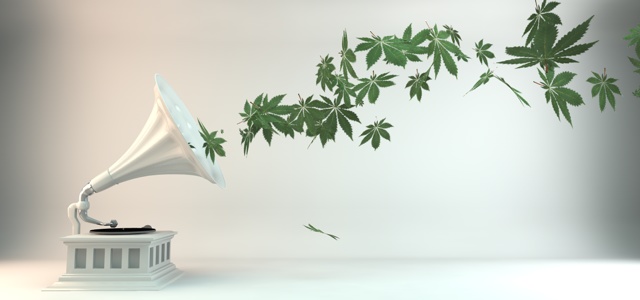
Aaron Kriever, Staff Writer
Musicians have long found inspiration in expe rimental drugs, and cannabis is one of the most notable assets in popular music. Throughout the 20th century, weed has played a large role in the creation of music, perhaps because anything and everything sounds awesome while under the influence. Even before the 1900s, composers of classical music smoked opium while writing in order to spur creativity. The societal and emotional impact of music created with the help of cannabis far outweighs the stigma surrounding the drug and its users.
rimental drugs, and cannabis is one of the most notable assets in popular music. Throughout the 20th century, weed has played a large role in the creation of music, perhaps because anything and everything sounds awesome while under the influence. Even before the 1900s, composers of classical music smoked opium while writing in order to spur creativity. The societal and emotional impact of music created with the help of cannabis far outweighs the stigma surrounding the drug and its users.
Jazz in the early 20th century was largely written with the aid of numerous drugs, cannabis being one of them. The great trumpeter Louis Armstrong smoked weed ever since being introduced to it in the early 1920s. Armstrong even smoked before he would perform live or record. Even after being arrested in 1930 for possession of the drug, Armstrong continued to smoke and defended the use of cannabis for himself and others.
During the 1960s, weed was an integral part of the hippie movement. Musical icons like Jimi Hendrix, Bob Dylan, the Grateful Dead, and the Beatles all indulged in the herb as a relaxant and a tool for musical inspiration. The presence of cannabis in hippie culture helped to bring people together. This subsequently allowed musicians to share new ideas and techniques that might not have otherwise been created if they weren’t brought together by weed. Without it, it’s likely that we wouldn’t have nearly as much innovative music as we do today.
Rock ‘n’ roll music of the ‘70s and ‘80s brought further romanticism to the drug. Black Sabbath’s notable tune “Sweet Leaf,” from the band’s 1972 album Master of Reality professes a personal bond with the plant. The lyrics “My life is free now, my life is clear, I love you sweet leaf, though you can’t hear” couldn’t be more blatant. The song and the album unintentionally gave rise to the stoner rock genre, with distorted guitars and slow relaxed tempos. Other bands like Aerosmith, with their song “Reefer Head Woman,” and Led Zeppelin, with “Going to California,” relied on weed as a subject for their rock anthems.
In modern music, cannabis has been referenced even more blatantly than in the past. Popular hip-hop artists like Lil Wayne, Cypress Hill, and Kid Cudi all use the plant as a musical tool and a lyrical subject. Weed is referenced as a day-to-day activity in an attempt to take away the stigma that the drug suffers from. On the other end of the musical spectrum, stoner metal bands such as Sleep and Intronaut utilize weed as a central theme of their music, which the entire point of listening to the bands is to do so while high.
As Louis Armstrong once said, “There is no one on this earth that can ever stop [cannabis] all from growing. No one but Jesus — and he wouldn’t dare. Because he feels the same way that I do about it.”
The increasing prevalence of cannabis in popular and musical culture shows that it’s meant to bring people together and to spark innovation. No argument can be made that cannabis has not helped contribute greatly to the musical world. As long as people want to get high — and they will — then weed will continue to inspire.
Leave a Reply